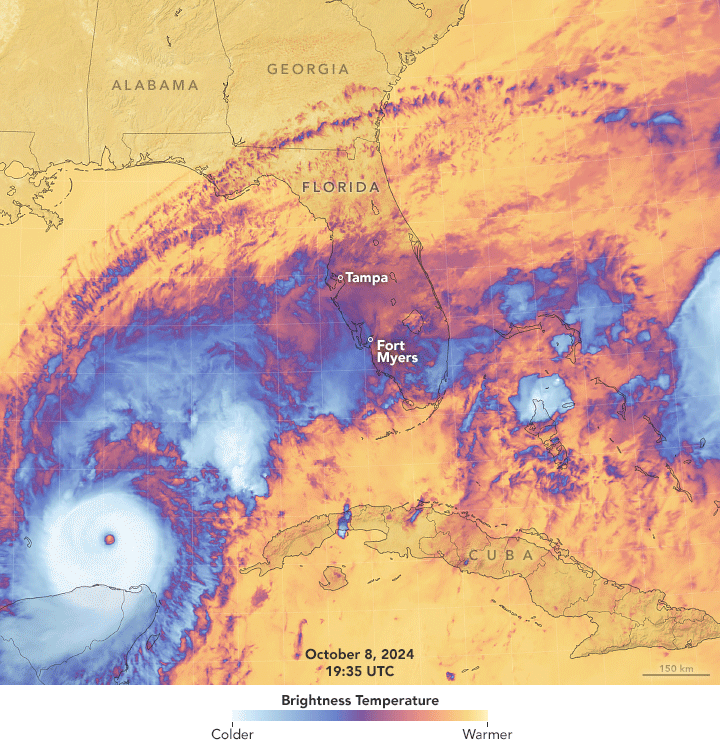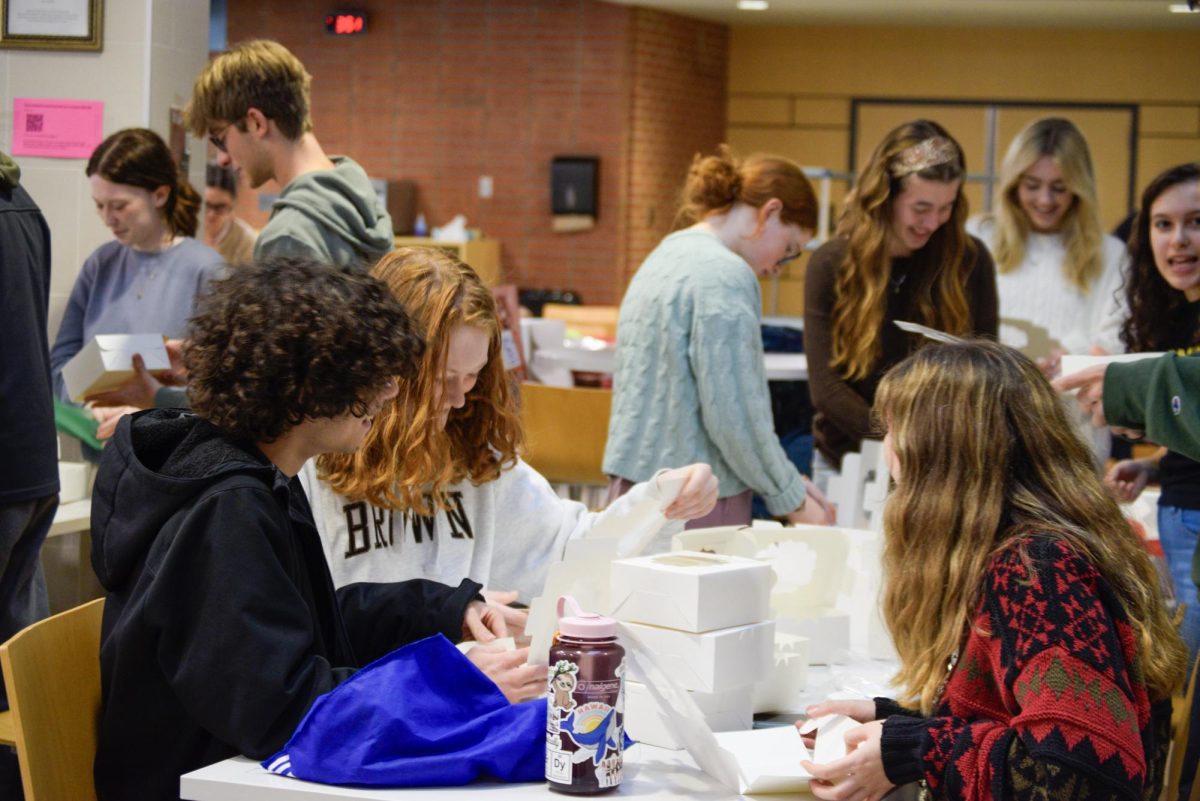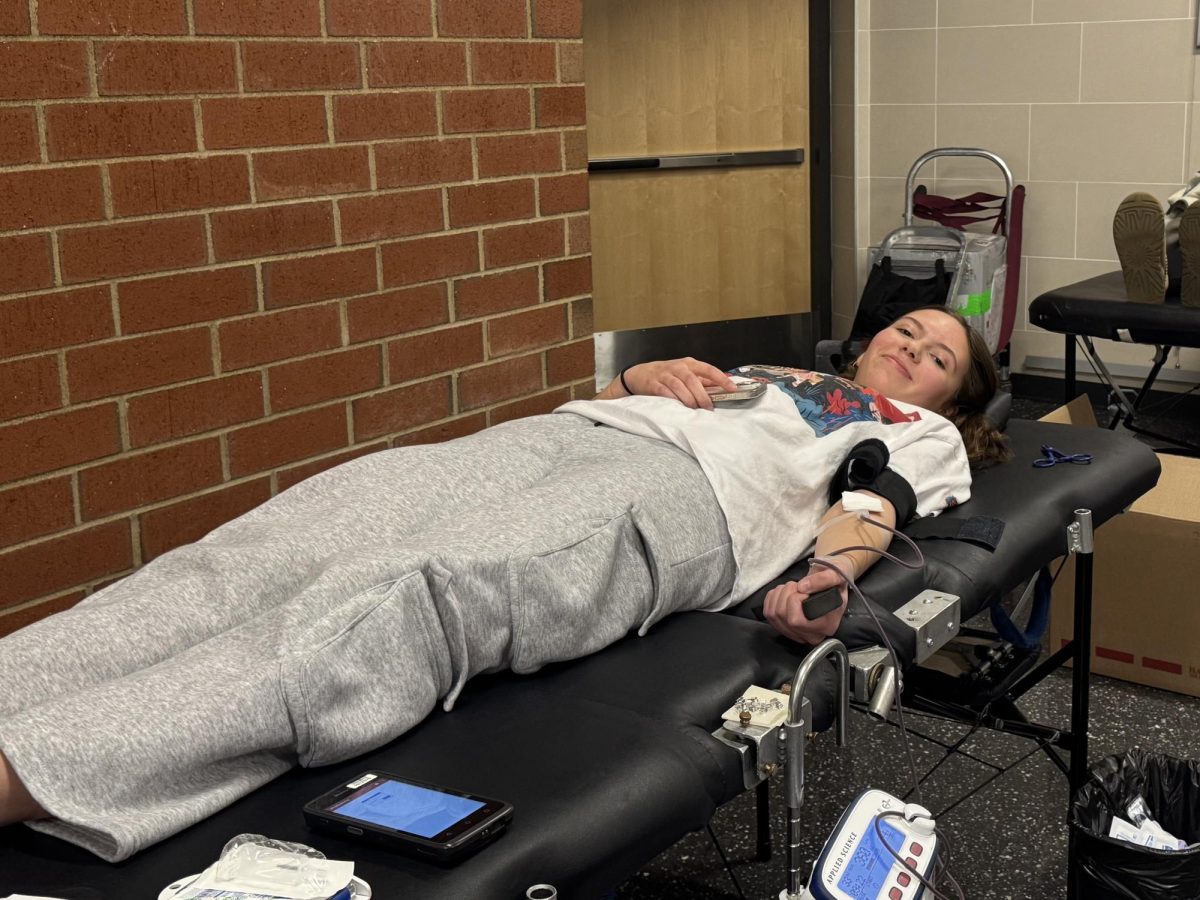On Oct. 9 around 9 P.M. Hurricane Milton made landfall near Siesta Key, Florida. Within 24 hours, the hurricane grew from a Category 1 hurricane to a Category 5, which means winds reached 157 miles per hour and catastrophic damage occurred.
Ali Reid, an Accuweather reporter who covered the storm in Fort Myers – about 1 hour south of the eye of the storm – explained the effect of hurricanes.
“Anytime you’re near or in the eye of the storm can be a very scary feeling, right? Because it happens so quickly and it can be very impactful,” Reid said.“For someone like me, who was about an hour south of where the main eye had hit, I was dealt with a ton of really strong wind, but no rain until the back end of the storm came.”
Hurricane Milton was especially unique because it came two weeks after another devastating hurricane, Hurricane Helene, which caused major floods in North Carolina. It is also unique because of its formation and effects. Melissa Costanzer, an Accuweather broadcaster who covered Hurricane Milton, noted how Florida’s regular weather pattern of eastern breezes pushing showers to central/western Florida helped develop wind shear for tornadoes to form.
“A lot of storms from Florida come from the south, so they’ll come from around Cuba and work their way into that coastline. [Milton] kind of came almost across the Gulf,” Costanzer said.
Hurricane Milton also caused tornadoes that did their share of damage to homes. Some roofs were completely torn off in non-mandatory evacuation zones due to tornadoes. Tornadoes are quite common in hurricanes, especially this hurricane season, but most are short-lived and on the weaker side of the EF scale. The EF scale is a system used to categorize tornado intensity.
“The EF scale goes from EF0 to EF5, and 3 and above is considered a major tornado,” Constanzer said. Constanzer also explained that Hurricane Milton had at least 3 confirmed EF3 tornadoes, which is unique for tropical storms.
Although the hurricane and its dangerous offspring were predicted and reported, choosing to wait out the storm or flee your home can be a difficult decision. In an area like Florida that gets hit by all sorts of storms during hurricane season, people know what areas will be mandatory evacuation zones, and people in those zones are told to flee. But if people in less dangerous areas choose to stay at home, lots of preparations come into play. About a week out from landfall, people decide whether they should evacuate or not. They grab their treasured items, important documents, families, and pets, board up windows, and put up hurricane shutters to protect their homes.
“The big deal is running from the water and then you just hide from the wind,” Constanzer said. Floodwaters are dangerous because they usually contain bacteria from the sewer systems, and they rise much faster than people expect. Additionally, storm surges can be so strong that they damage buildings. As for winds, they can knock down trees, start power outages, tear homes apart, and slam discarded objects through windows and into homes and cars.
Millions of families were left without homes or power, with food and water in short supply. The number of people varies depending on the source, but somewhere around 14 people have lost their lives due to Hurricane Milton.
Students can help provide resources for survivors of the hurricane.
“In any major storm, there’s going to always be a need for food, water, and shelter. But there are so many that are dealing with structure issues, loss of homes because of major flooding- maybe because it was the high winds that knocked their homes down- So I would say the biggest need right now is just shelter,” Reid said.
Reid highly recommends donating to the American Red Cross, an organization dedicated to distributing supplies to families after major traumatic events. The American Red Cross gives food, water, and other basic needs to the people impacted and helps them get into hotels or shelters.
Freshman Senate Vice President Jennie Varrassa shared what students can do to help. “I think that they should donate anything that they can. It doesn’t need to be a big donation, every little bit helps,” Varrassa said.
To donate to the American Red Cross, check out this link.








